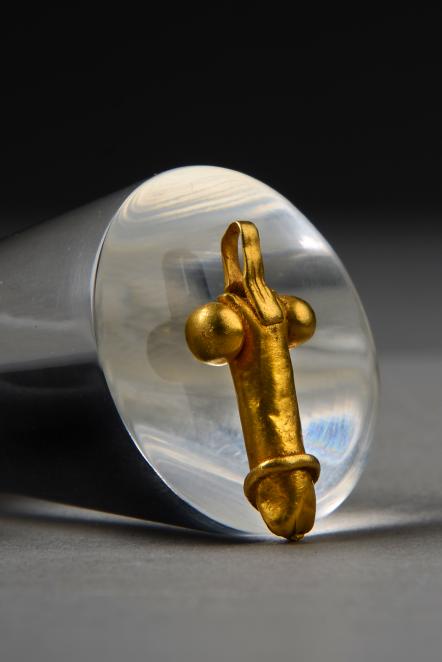Romano-British pendant
Accession Number KILLM : 2012.1
Description
A rare gold Romano-British pendant in the shape of a phallus. The pendant is 2cm long, straight, oval sectioned, hollow, formed of rolled or beaten sheets of gold soldered together lengthways, rounded at the terminal with a small aperture left open at either end. A separate transverse loop formed from triple ribbed sheet is soldered into position at the top, with separately applied solid globular testicles to either side. Separately applied wire with irregular transverse grooves on the underside (perhaps to act as keying for the solder) defines the edge of the foreskin. The pendant is in good condition but worn, with the ribs on the attachment loop completely worn away over most of the surface.
Read MoreRomano-British pendant
It is a particularly rare find for Norfolk, and indeed Britain, in its depiction of a phallus made in richly coloured gold, and is in good condition. Its special significance lies in the symbolism of the object and what is tells us about life in Roman times and people’s belief systems. Phallic amulets were commonly worn in Roman times both as a symbol of sexuality, and to promote fertility. Ancient Romans believed that sexual symbols like this gold phallus would shield them from harm and protect them from evil curses. Eroticism and sexuality were prevalent in every form of Roman art, from paintings, to sculpture, and even jewellery. A similar gold example was recorded in Essex

